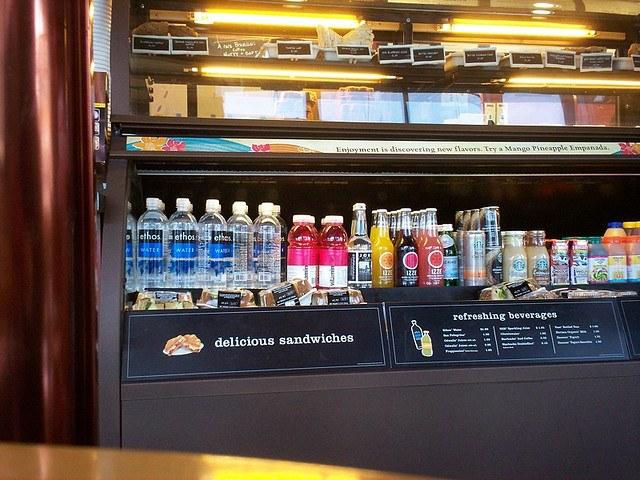
California is in the midst of a four-year drought, one of the worst in the Golden State’s history. Gov. Jerry Brown declared a state of emergency due to the drought in 2014. This year, he mandated cities and towns reduce water use by 25 percent, the first time the state has ever mandated water reductions. Things are desperate in California, and it took Starbucks a while to realize how desperate the situation is.
Starbucks has a bottled water brand called Ethos Water. This week, the company announced it would move Ethos Water’s bottling operations from California to Pennsylvania. A few weeks ago, Mother Jones published an investigation into Ethos Water, revealing that it is bottled in Merced, California, ranked as being in “exceptional drought,” the worst category, by the U.S. Drought Monitor. This year, the Merced County Board of Supervisors issued a resolution proclaiming the existence of a local emergency due to drought.
Ethos Water sources its water from private springs in the Placer County town of Baxter, which is also ranked as being in “exceptional drought.” In 2014, Placer County Water Agency declared a water shortage emergency in 2014.
“We are committed to our mission to be a globally responsible company and to support the people of the state of California as they face this unprecedented drought,” said John Kelly, Starbucks senior vice president of global responsibility and public policy, in a statement. “The decision to move our Ethos water sourcing from California and reduce our in-store water usage by more than 25 percent are steps we are taking in partnership with state and local governments to accelerate water conservation.”
There is a problem with the location of Ethos Water’s new bottling operations too -- it also is in the midst of a drought. The Pennsylvania Department of Environmental Protection issued a drought watch in March for 27 counties, including the one in which Ethos operates. Although the drought in Pennsylvania is not as severe at California’s, parts of the state are experiencing below-average groundwater levels.
Ethos Water is not the only bottled water brand to source water from areas in California under exceptional drought, as the Huffington Post revealed last month. The San Francisco Chronicle reported this week that a Crystal Geyser Water Co., a private water bottling company, plans to source drinking water from an aquifer that feeds the Sacramento River.
Bottled water should be for emergency purposes only
Why do bottled water companies source from drought-stricken areas? The reason is simple: Too many Americans drink bottled water when they don’t have to drink it. U.S. consumers bought 8.45 billion gallons of bottled water in 2009, according to Food and Water Watch, spending $10.6 billion. Almost half of the bottled water they bought came from municipal water supplies, also known as tap water.
It is time for Americans to wake up and realize that bottled water should be for emergency purposes only. There are folks in California whose wells are going dry, and they are on waiting lists to have either new wells installed or have their wells drilled deeper. Out of necessity, they are using bottled water. The same goes for people facing a natural disaster or whose water has a terrible taste due to natural sulfur levels, such as in Lemoore, California. However, Americans who have access to quality municipal water sources can buy reusable water bottles, stick them up to the faucet and fill them up with the water they are already paying for monthly.
Image credit: Flickr/Paul Swansen

Gina-Marie is a freelance writer and journalist armed with a degree in journalism, and a passion for social justice, including the environment and sustainability. She writes for various websites, and has made the 75+ Environmentalists to Follow list by Mashable.com.














